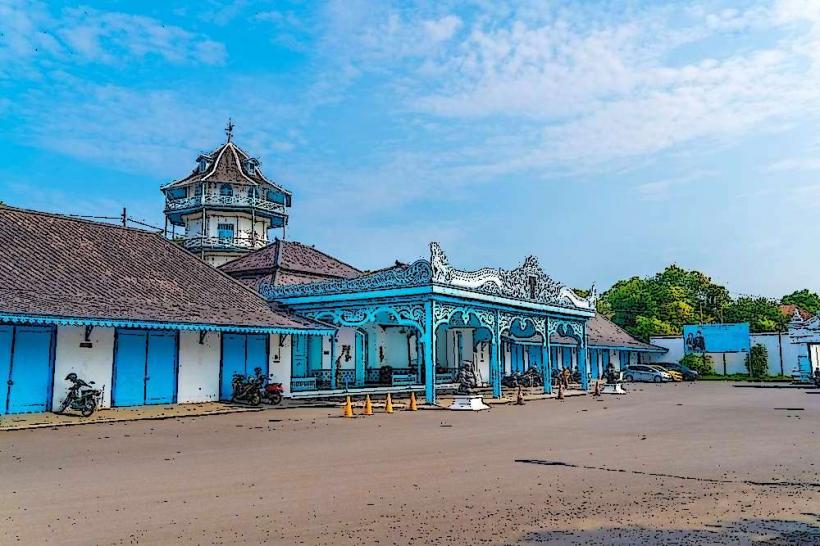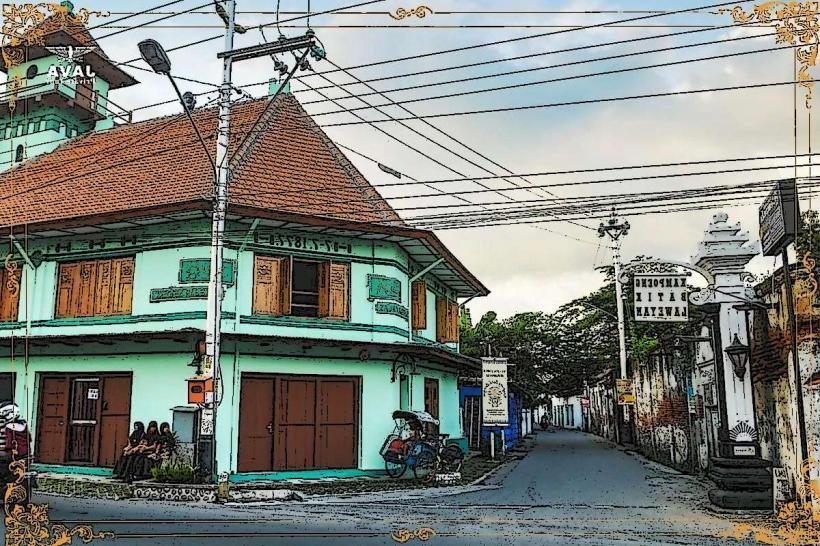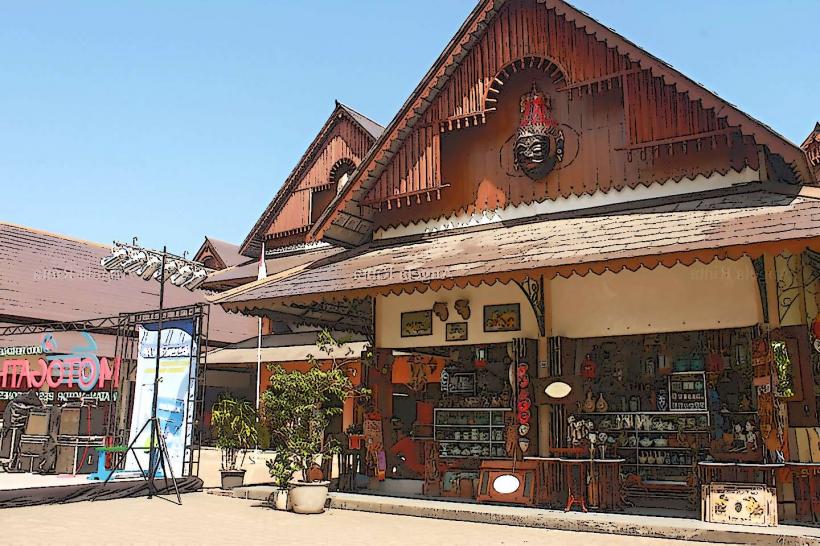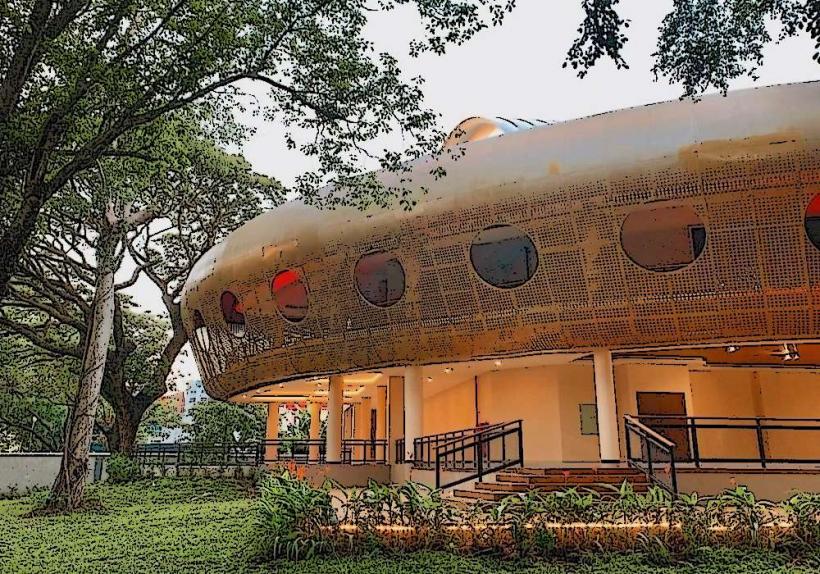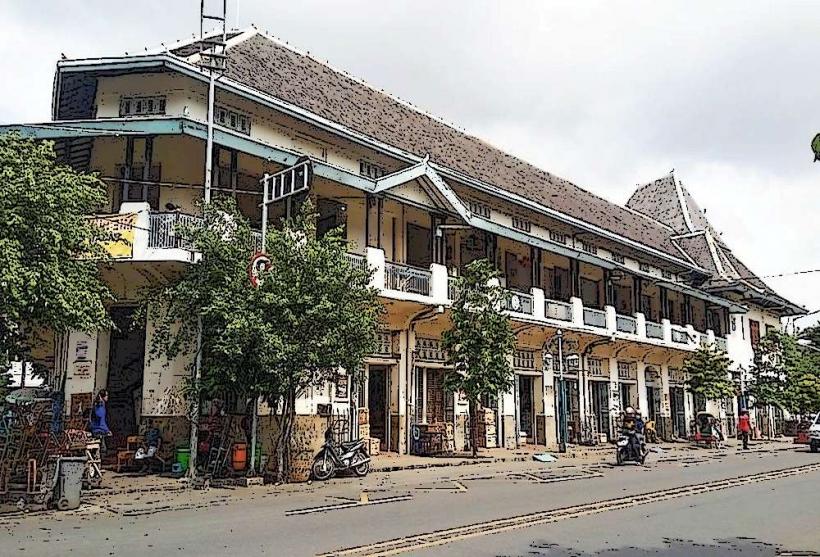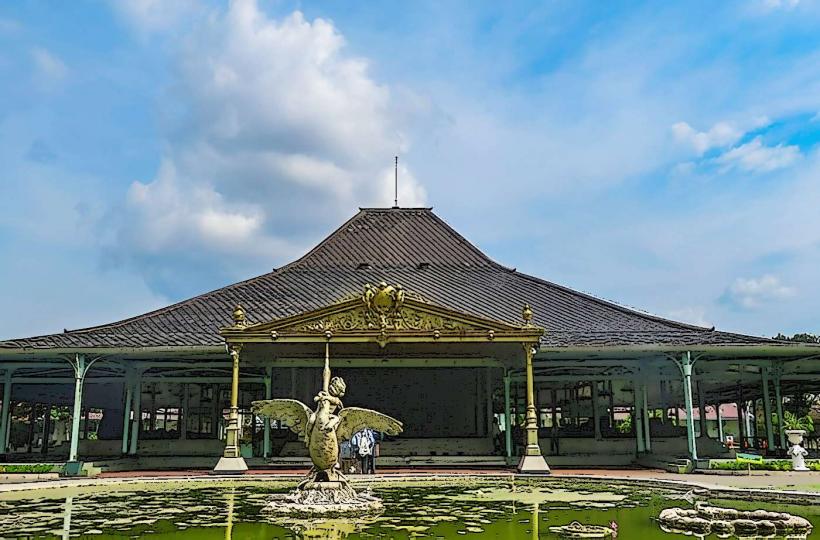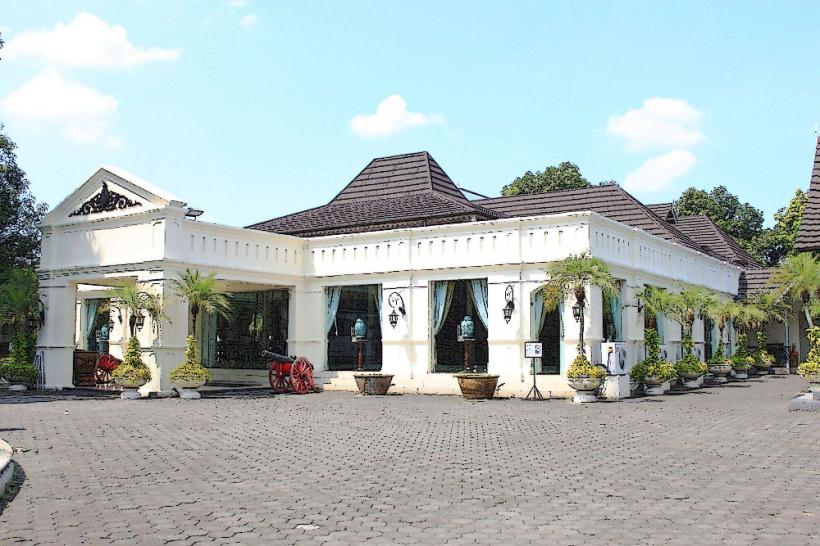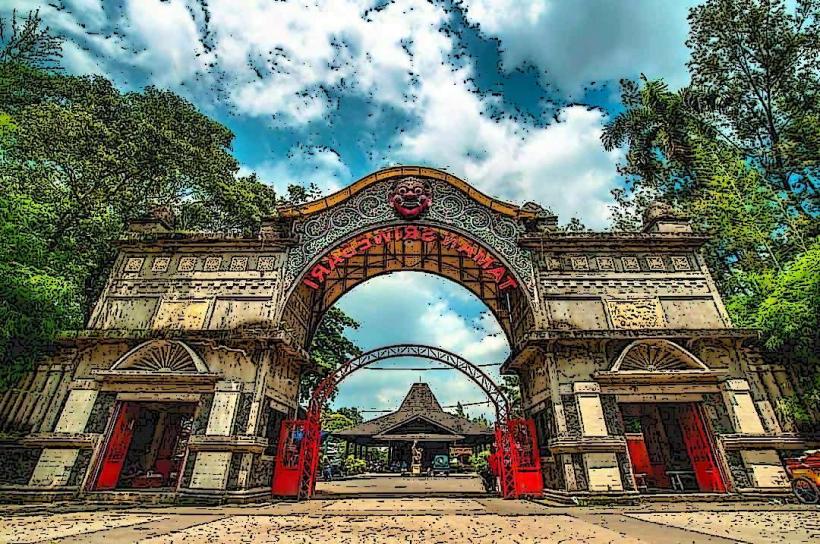Information
Landmark: Candi CetoCity: Surakarta
Country: Indonesia
Continent: Asia
Candi Ceto: A Majestic Hindu Temple on the Slopes of Mount Lawu
Candi Ceto is an ancient Hindu temple located on the slopes of Mount Lawu in Karanganyar, Central Java, Indonesia. Situated at an elevation of about 1,500 meters above sea level, the temple offers not only an insight into Indonesia’s ancient Hindu culture but also a breathtaking view of the surrounding landscape. It is one of the lesser-known yet significant temples in Java, offering a more serene and tranquil atmosphere compared to other more famous temples like Borobudur or Prambanan.
1. Historical Background of Candi Ceto
- Origins:
- Candi Ceto is believed to have been built during the 14th century, specifically during the period of the Majapahit Kingdom, one of the most powerful Hindu-Buddhist empires in Southeast Asia. It is thought to have been a religious site dedicated to Shiva, one of the principal deities in Hinduism, reflecting the influence of Hinduism in Java during the Majapahit era.
- Discovery and Restoration:
- The temple was rediscovered in 1835 by a Dutch archaeologist, but it had been largely abandoned and forgotten long before this. The restoration of Candi Ceto began in the 20th century and continues today to preserve its structural integrity and cultural significance.
- Despite its restoration, the temple still retains a mysterious aura, as much about its original purpose and function remains unclear.
2. Architecture and Design of Candi Ceto
Temple Layout:
- Candi Ceto is a mountain temple complex, with a series of terraces and steps leading up the temple. It is a multi-tiered temple that gradually ascends the mountain slope, symbolizing a journey from the earthly realm to the divine.
- The temple is built in the Hindu style, with elements of Shivaite architecture. The complex includes a series of stone structures, shrines, and sculptures that are intricately carved with Hindu motifs and symbols.
Main Structure:
- At the center of the temple complex is the main structure, which is a square-shaped platform with a pedestal in the middle. This platform is believed to have been the location of the main Shivaite worship ceremonies and rituals.
- The temple’s stones are decorated with bas-reliefs, many of which depict various mythological figures from Hindu epics like the Mahabharata and Ramayana. The carvings provide valuable insights into the iconography and religious practices of the time.
Unique Features:
- One of the striking features of Candi Ceto is the abundance of small statues scattered throughout the site, many of which are in the form of lingams (a symbol of Shiva). These statues and stones are arranged in such a way as to represent a symbolic journey toward enlightenment and divinity.
- The temple also features stairways that lead to higher platforms, and these stairs are symbolic of the spiritual ascent that worshippers would have undertaken during rituals.
3. Cultural and Religious Significance
Hindu Influence in Java:
- Candi Ceto is a testament to the Hindu cultural influence in Java, particularly during the Majapahit period. The temple reflects the religious practices and beliefs of the era, with an emphasis on Shivaite worship.
- While most of Java’s Hindu temples (like Prambanan) are located in the central lowlands, Candi Ceto’s position on the mountainside suggests that it may have been a site for ascetic rituals and meditative practices, common in Hindu spiritual traditions.
Role in Spirituality:
- It is believed that Candi Ceto was not just a place of worship but also a site where spiritual journeys were undertaken, symbolized by the ascent up the temple’s terraces. The site represents the transition from earthly existence to the spiritual realm and was possibly a site for ritual sacrifices, prayers, and meditation.
- The alignment of the temple with the natural surroundings, especially the views of the mountains, indicates the temple’s connection to nature and its significance in Shivaite spirituality, which emphasizes harmony between nature and divine forces.
4. Architecture and Symbolism of Candi Ceto
Stairs and Terraces:
- The steps leading up the temple are significant not only as architectural features but also as symbolic elements. The gradual ascent signifies the spiritual journey a devotee would take in their quest for higher knowledge and closeness to the divine.
Lingga and Yoni:
- The presence of lingga and yoni statues (symbols of the divine and creation) throughout the temple complex is significant in Shiva worship. These symbols represent Shiva and Parvati, the god and goddess of creation in Hinduism, and their union, representing fertility and the creative forces of nature.
Carvings and Reliefs:
- The carvings at Candi Ceto show Hindu gods, mythological creatures, and spiritual beings. The carvings are not only decorative but also convey religious narratives that provide insight into the Hindu faith at the time.
5. The Location of Candi Ceto
Mount Lawu:
- Located on the slopes of Mount Lawu, one of the highest mountains in Central Java, Candi Ceto offers visitors stunning views of the surrounding landscape. The natural beauty of the area is an essential part of the temple’s spiritual atmosphere.
- Mount Lawu is considered a sacred mountain, and the temple’s positioning on its slopes adds to the temple’s significance as a spiritual site. Visitors can enjoy the cool air and the tranquil environment that surrounds the temple complex.
Access and Visitor Experience:
- Reaching Candi Ceto requires a scenic journey through the mountainside, and visitors can enjoy the lush greenery and natural beauty that surrounds the site. The temple is reachable by car, but visitors must walk up to the temple itself, climbing the steep stairways and terraces.
- The serene environment makes it an ideal place for reflection, meditation, and cultural exploration, attracting visitors interested in both history and spirituality.
6. Restoration and Preservation Efforts
Conservation:
- The ongoing restoration efforts at Candi Ceto are important for preserving this ancient site for future generations. The Indonesian government and cultural organizations continue to work on preserving the structural integrity and artistic features of the temple.
- These efforts are crucial for maintaining the temple’s historical and cultural significance, ensuring that it remains an important part of Java’s heritage.
Challenges:
- As a temple situated in a mountainous region, Candi Ceto faces challenges such as erosion, weathering, and natural disasters, which have affected some of its structures over time. However, the preservation work continues to ensure the site is protected and maintained.
7. Visiting Candi Ceto
Best Time to Visit:
- The best time to visit Candi Ceto is during the dry season (April to October), when the weather is more favorable for traveling and trekking to the temple. The cool mountain air and the panoramic views of the surrounding valleys and forests make this an ideal time for sightseeing.
Opening Hours:
- Candi Ceto is typically open daily from 7:00 AM to 5:00 PM, though it is advisable to check for any changes in opening hours, especially during public holidays or special events.
Entrance Fees:
- The entrance fee to Candi Ceto is generally affordable, making it accessible to local and international visitors alike. The fee helps contribute to the maintenance and preservation of the site.
8. Conclusion
Candi Ceto is a remarkable Hindu temple that offers a unique glimpse into Indonesia’s rich cultural and religious history. Nestled on the slopes of Mount Lawu, this ancient temple is not only an architectural wonder but also a site of spiritual significance. Whether for its historical value, natural beauty, or cultural relevance, Candi Ceto remains an important and awe-inspiring destination for anyone interested in exploring the Hindu heritage of Indonesia.

